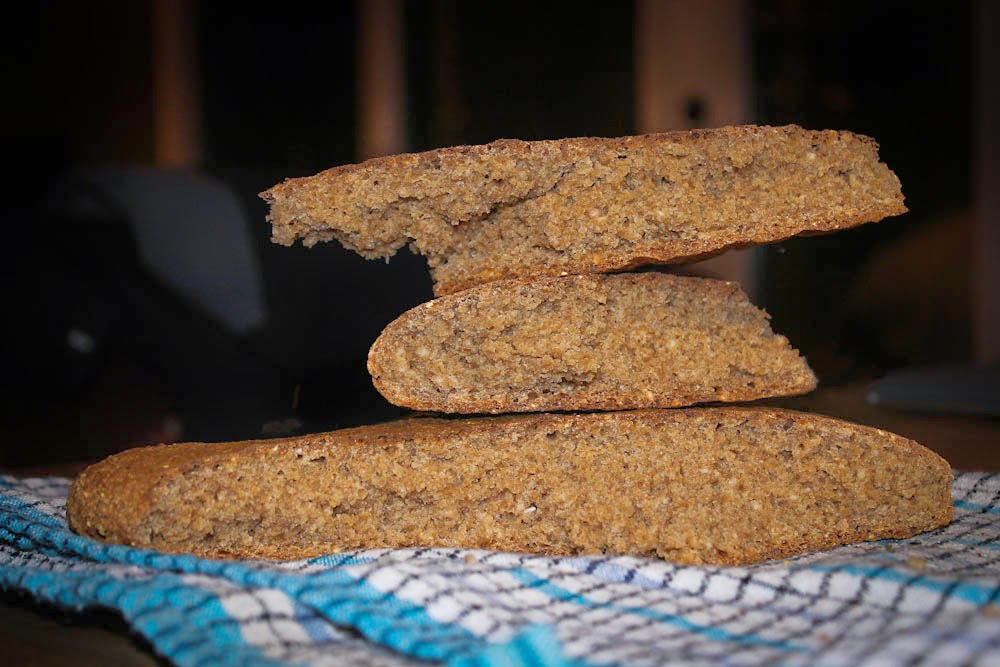Miguel writes, "I tried to replicate an ancient Egyptian bread,
starting with the right kind of wheat, the grinding and the baking... I
also made a modernized version inspired by Egypt."
 The science behind yeast, which transforms sugars and uses bread gluten
to make holes and to make it softer wasn't fully understood until
thousands of years later. Nevertheless, its ability to make bread rise
was probably known. It is difficult to say if Egyptians used yeast to
leaven the breads. But there's a couple of reasons that can lead us to
believe they did:
The science behind yeast, which transforms sugars and uses bread gluten
to make holes and to make it softer wasn't fully understood until
thousands of years later. Nevertheless, its ability to make bread rise
was probably known. It is difficult to say if Egyptians used yeast to
leaven the breads. But there's a couple of reasons that can lead us to
believe they did:
* The cultivation of wild yeast present in the air and in the water
is one of the oldest bread making traditions. Flour and water that has
been left outside after a while tends to grow some variety of wild
yeast. Not only does this improve the texture, but also the flavor.
Pieces of that bread can be used later on to make more bread, or like
the Sumerians did, to make beer. This actually became a way of
cultivating and domesticating the best strains of yeast. Yeast strains
present in the Nile are still used today for bread and beer-making.
* The two staples of the Egyptian diet, often produced side by
side, were bread and beer. Even if they didn't use beer to make bread
(something that is easy to assume they did), the yeast present on the
air and on the grain probably was present on the bread that was left out
in the air.
* Archeological evidence shows that beer was made by first
baking "beer bread,” a type of well-leavened, lightly baked bread that
did not kill the yeasts, which was then crumbled over a sieve, washed
with water in a vat and then left to ferment. Moreover, a strain of
yeast, Saccharomyces cerevisiae present in the region of the Nile, was
found to be used in bread and beer making.

The science behind yeast, which transforms sugars and uses bread gluten to make holes and to make it softer wasn't fully understood until thousands of years later. Nevertheless, its ability to make bread rise was probably known. It is difficult to say if Egyptians used yeast to leaven the breads. But there's a couple of reasons that can lead us to believe they did:

No comments:
Post a Comment